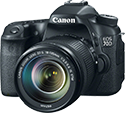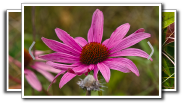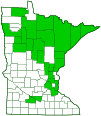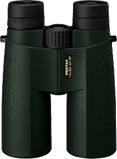Many-fruited Pelt Lichen
(Peltigera polydactylon)
Conservation • Description • Ecology • Distribution • Taxonomy
Conservation Status |
|||
| IUCN Red List | not listed |
||
| NatureServe | NNR - Unranked SNR - Unranked |
||
| Minnesota | not listed |
||
Description
Many-fruited Pelt Lichen is a common and widespread, medium-sized lichen. It occurs throughout the world on every continent except Antarctica. It is most common in the temperate and boreal regions of Europe and North America. It occurs throughout most of the United States and southern Canada, but it is absent from the Great Plains and the Great Basin. It grows in shady areas of forests with high humidity, on soil, on moss-covered logs and rocks, on plant debris on the ground, and sometimes at the mossy bases of tree trunks and stumps.
The vegetative body (thallus) is leaf-like (foliose) and forms a rosette 2″ to 8″ (15 to 24 cm) in diameter or sometimes larger. When it first appears, it grows with a roughly circular form. As it ages it disintegrates into irregular groups of elongated lobes. The lobes are ⅜″ to ¾″ (1 to 2 cm) wide and 1½″ to 2″ (4 to 5 cm) long, sometimes much longer. The tips are rounded to almost squared off, and often ascending. The margins are more or less wavy or crumpled (crisped).
The upper surface is smooth, shiny, and blackish green when wet, bluish gray to brown when dry. It is sometimes whitish toward the margins. Isidia and soredia are not produced.
The lower surface is whitish with a network of flattened veins. The veins are flattened and dark brown toward the center, yellowish brown toward the margins. It does not have an outer protective layer (cortex). It is loosely attached to the surface by brown to black, branched or bushy, root-like structures (rhizines) near the base of each lobe.
Sexual (spore-producing) reproductive structures (apothecia) are frequent to abundant on the margins of rather long, ascending lobes. The apothecia are 3 ⁄16″ to 5⁄16″ (5 to 8 mm) in diameter, oblong to more or less round, becoming curved inward and appearing saddle shaped. The disc is smooth and reddish brown, becoming dark brown with age.
To help identify lichens, specialists perform spot tests by applying a drop of common chemical reagents to the surface. Many lichens show a distinctive color change—their unique “chemical fingerprint.” However, Many-fruited Pelt Lichen does not react to any of the standard tests, including the crucial P-test, meaning it shows no color change when the chemicals are applied.
Similar Species
Ecology
Substrate
Ground
Growth Form
Foliose
Habitat
Forests with high humidity
Hosts
Distribution |
||
|
Sources Biodiversity occurrence data published by: Minnesota Biodiversity Atlas (accessed through the Minnesota Biodiversity Atlas Portal, bellatlas.umn.edu, 11/25/2025). |
|
| 11/25/2025 | ||
Occurrence |
||
Common and widespread |
||
Taxonomy
Kingdom
Fungi (Fungi)
Subkingdom
Dikarya
Phylum
Ascomycota (Sac Fungi)
Subphylum
Pezizomycotina (Sac Fungi and Lichens)
Class
Lecanoromycetes (Common Lichens)
Subclass
Lecanoromycetidae (Shield Lichens, Sunburst Lichens, Rosette Lichens, and Allies)
Order
Peltigerales
Suborder
Peltigerineae
Family
Peltigeraceae
Subfamily
Peltigeroideae
Genus
Peltigera (Pelt Lichens)
Section
Polydactylon
Mycobiont
Peltigera polydactylon
Photobiont
Nostoc
Subordinate Taxa
Synonyms
Lichen caninus var. polydactylon
Lichen polydactylon
Peltidea polydactylon
Peltigera canina var. attenuata
Peltigera canina var. polydactylon
Peltigera polydactyla var. microcarpa
Peltigera polydactylon var. multilobata
Peltigera polydactylon var. multisecta
Peltigera polydactylon var. udeghe
Peltigera polydactylon var. major
Peltigera polydactylon var. microcarpa
Peltigera polydactylon var. vulgaris
Peltigera rufescens var. polydactylon
Common Names
Many-fruit Pelt Lichen
Many-fruited Pelt Lichen
Glossary
Apothecium
An open, disk-shaped or cup-shaped, reproductive structure, with spore sacs on the upper surface, that produces spores for the fungal partner of a lichen. Plural: apothecia.
Foliose
Leaf-like; referring to lichens with thin, flat, leaf-like growths divided into lobes which are free from the substrate.
Isidium
An asexual reproductive structure of a lichen in the form of a tiny outgrowth of the upper cortex. It consists of a cluster of algal cells (the photobiont) wrapped in fungal filaments (the mycobiont), and a shiny outer layer of protective tissue (cortex). Plural: isidia.
Rhizine
A root-like structure of a lichen that attaches the lower layer to the substrate.
Soredium
An asexual reproductive structure of a lichen in the form of a tiny dull granule on the thallus surface that can be easily brushed off. It consists of a cluster of algal cells (the photobiont) wrapped in fungal filaments (the mycobiont), but without an outer layer of protective tissue (cortex). Plural: soredia.
Thallus
In lichens: The vegetative body of a lichen composed of both the alga and the fungus. In liverworts: a flat, relatively undifferentiated plant body. Plural: thalli.
Visitor Photos
Share your photo of this lichen.
This button not working for you?
Simply email us at info@MinnesotaSeasons.com.
Attach one or more photos and, if you like, a caption.
Nancy Falkum |
||
 |
 |
|
MinnesotaSeasons.com Photos
|

Slideshows
Peltigera polydactylon - fungi kingdom
Nineli Lishina

Visitor Videos
Share your video of this lichen.
This button not working for you?
Simply email us at info@MinnesotaSeasons.com.
Attach a video, a YouTube link, or a cloud storage link.
Other Videos



